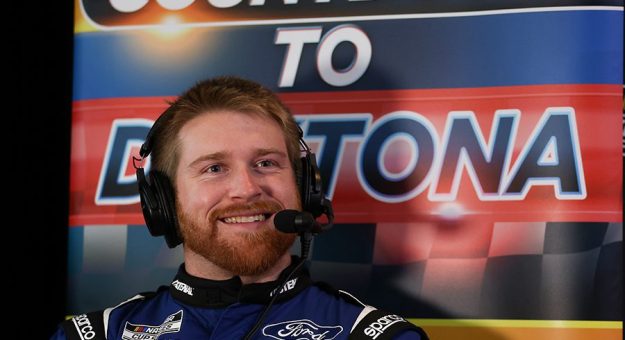The club of NASCAR Cup Series drivers who can say they’ve experienced the future of Atlanta Motor Speedway in Hampton, Ga. is very exclusive, at least for two more days.
Only three drivers have a membership: Ross Chastain, Kurt Busch and Chris Buescher.
The trio took part in a Goodyear tire test in January at the recently repaved and reconfigured 1.5-mile oval in Hampton, Georgia.
The Atlanta that drivers will find when that arrive at the track Saturday will find this:
- Corners that had their banking increased from 24 to 28 degrees
- The frontstretch widened from 55 to 61 feet
- The backstretch narrowed from 55 to 42 feet and the turns from 55 to 40 feet.
Combined with the superspeedway package of 510 HP and a 7-inch rear spoiler, Atlanta is intended to be Speedway Motorsports’ answer to Daytona International Speedway and Talladegas Superspeedway.
More: Suspension of Kaulig Racing Crew Members Upheld
Buescher believes it will have the desired effect, but it won’t be a carbon copy of races seen at those tracks.
“It was superspeedway-like with three cars,” Buescher said in a Wednesday press conference. “We were able to be wide-open and stay pretty tight. Handling was in play very quickly. Like any new paved racetrack, tires are very much on edge, so I think you’ll be really trying to be aware of that and be ready for that. And then I think we’ve also seen the pack speed at Daytona with these cars and how fast it got over single-car runs. We had three cars, but I think once you get a bigger group out there the speeds will go up even more, so I think it will start forcing you to lift a lot more. I don’t expect it to be a Daytona or a Talladega, but it may be closer to that than some of our older mile-and-a-halves.”
One key difference is Atlanta’s length.
The track is 1.5-miles long compared to the 2.5-mile Daytona and the 2.66-mile Talladega.
How will that impact the racing Sunday, specifically the ability of a driver to get a run on another car?
“That’s a fair question,” Buescher said. “We don’t have that extra half-mile at the end of the straightaway or quarter-mile to do something with that run, so it will be a little bit tougher. In reconfiguring it and adding the banking it narrowed up the racing surface at the same time, so I don’t know how much room there really is to take a run, where you can go with it.
“We’ve talked about in the past that Daytona is not real easy to be three-wide and, to be honest, we didn’t do a whole lot of three-wide racing at the 500. We always know that Talladega lends itself to a lot better than that and I’m sure we’ll see that once we get there, but even (at) Daytona we weren’t that aggressive on three-wide. I think some of that was just the newness of it for everybody, but it is narrow and Atlanta is gonna be worse yet.”
Buescher observed that the flatness of Atlanta’s frontstretch compared to Daytona’s and Talladegas’ banked tri-ovals will provide its own challenges, especially if a mistake is made.
More: Corey LaJoie: Lug Nut, Wheel Penalties Should be Revisited
“Even in the test with just a few cars losing the nose is a lot easier or worse,” Buescher said. “Losing the nose makes it tough to stay in line tight, so if you’re two-wide through there, losing the nose and sliding up to that outside lane you’re gonna have to lift or drag some brake, which is gonna hurt your line. I think you’ll probably see a lot more comers and goers and a lot more movement initially until we figure out what to do with it, but it is tight.”
NASCAR is expected to institute a double-yellow line rule at Atlanta similar to Daytona to Talladega. With that rule, drivers cannot advance their position by going beneath the line placed along the bottom of the track.
Buescher said something should at least be put in place on the frontstretch.
“What I’ll say from the test, is with the way the frontstretch was paved and all the extra asphalt was added, the transitions didn’t match up to the previous racing surface or the current racing surface, and it left some very rough areas, some big dips,” Buescher said. “Basically, it’s stuff that would be flat-out dangerous at the end of the day. …
“We need to have some kind of boundaries and at the same time we’ve been talking about the racing surface being maybe wide enough for three-wide and the frontstretch being wide enough for six, and where in the world are you gonna go if you realistically get four-wide on the frontstretch, which is very doable if you use it all – where do you go from there? …
“We’re all gonna be hard-headed and we’re gonna try to stay in it and that just won’t create good racing. It’ll create a spectacle for wrong reasons.”
